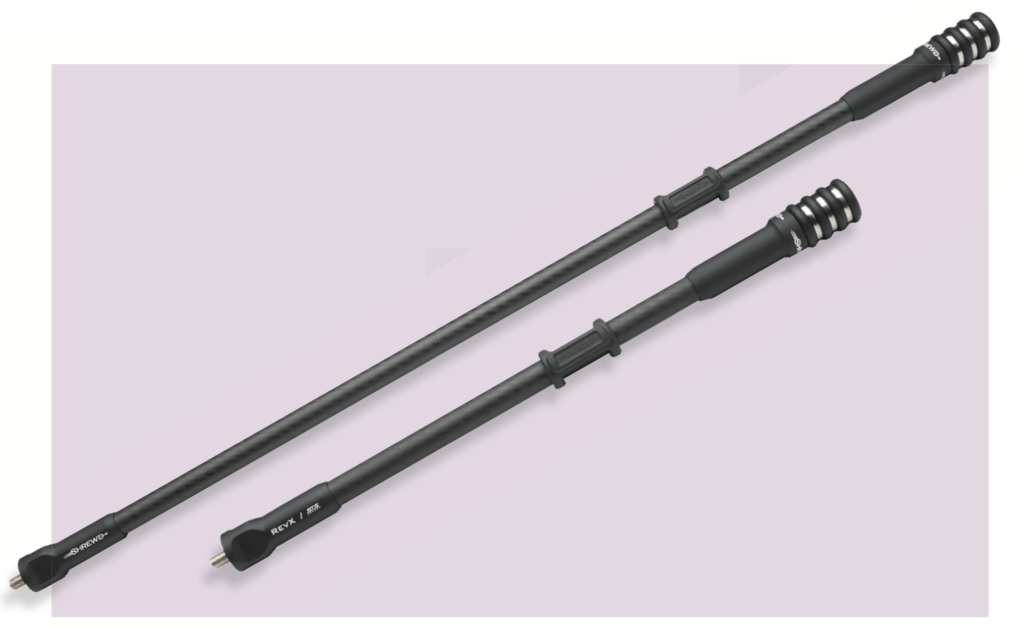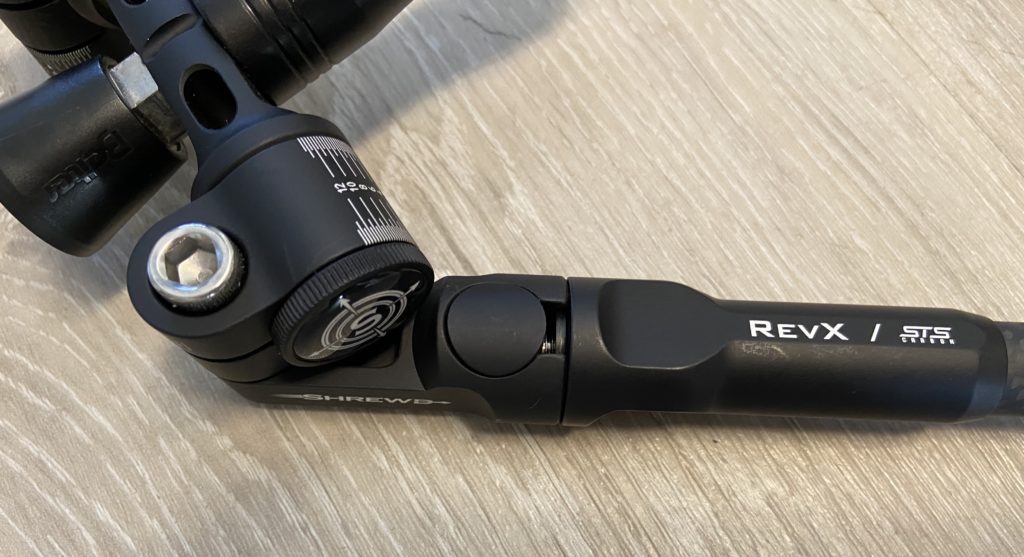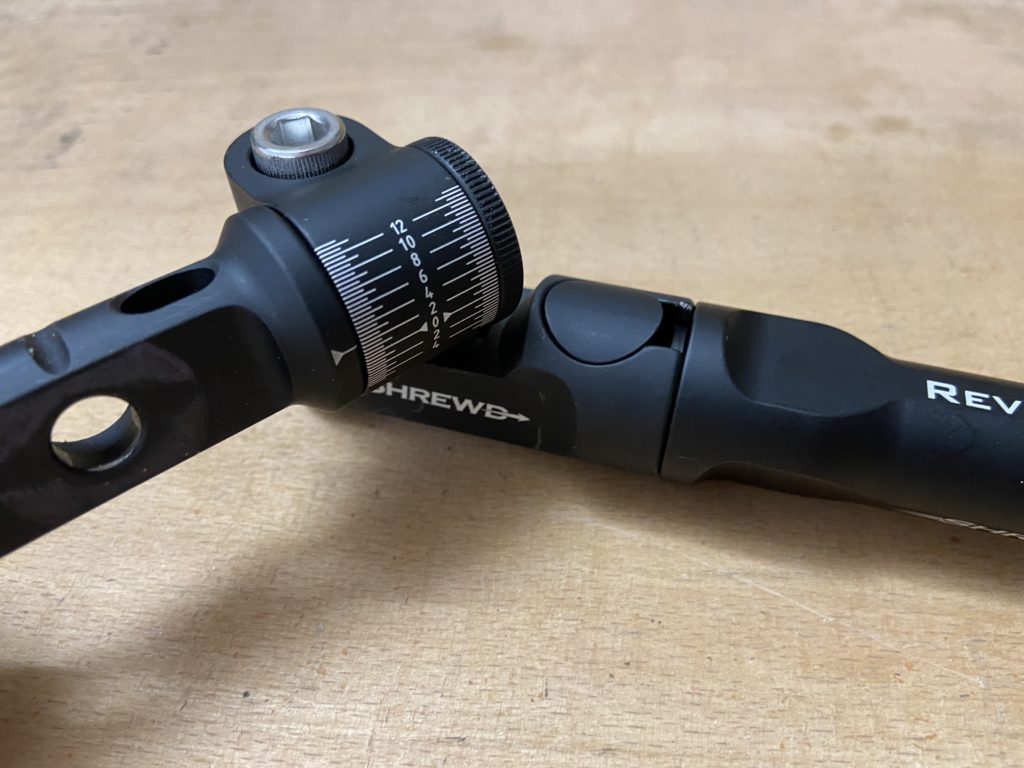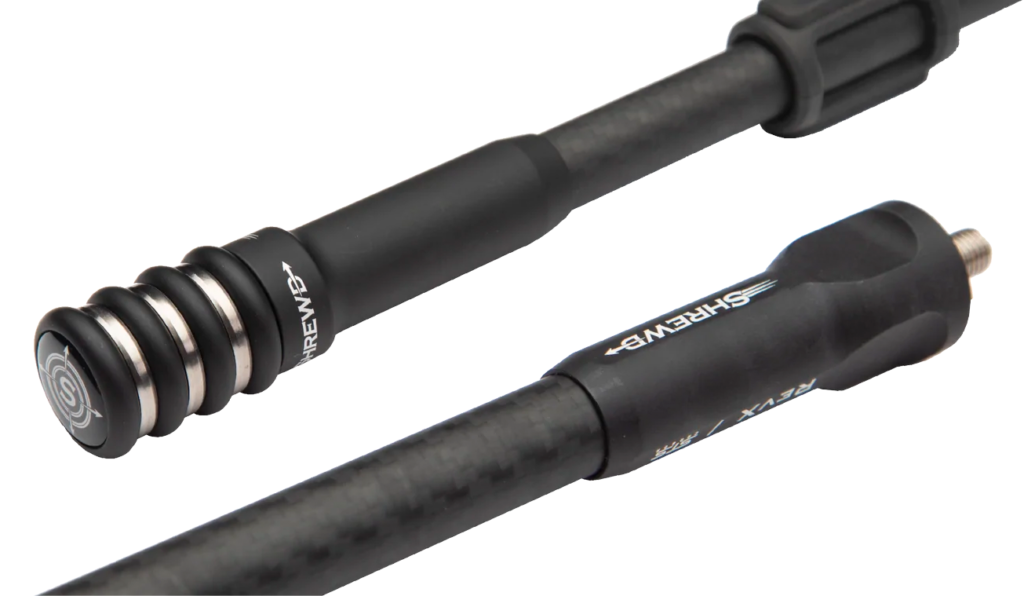Arne Metzlaff gets to grips with another big name, small-diameter offering
Some time ago, US manufacturer Shrewd – best known, perhaps, for its compound scopes – released a new stabiliser system. With the very thin, small-diameter Revel series, Shrewd made a breakthrough and achieved a significantly higher level of recognition in Europe.
Shortly afterwards, it released another stabiliser system, the RevX. This has been around for a couple of years, with celebrity users including Brady Ellison.
The RevX is slightly wider compared with the Revel, with a diameter of 16mm, and is available in lengths from 8inch to 36inch. The bars are completely black, with matt black sleeves. Fans of minimal logos will be pleased to see that the STS carbon itself is without lettering, but you can add the Shrewd sticker included in the package.
Also included are weights: a total of three 1oz weights made of tungsten and three intermediate aluminium weights (a third of an ounce), as well as an aluminium finishing weight (also a third of an ounce) to which the Shrewd logo has been applied. These end weights are available with different designs from Shrewd, so they can be individually selected.
As well as this, a three inch-long threaded rod is included, so that all the weights can be fastened together. Due to the STS carbon used and the special construction, the stabiliser is designed to offer good damping out of the box.
This is due in particular to the internally tapered design, which provides greater rigidity, and is further supported by the use of the well-known Shrewd Truss damping system integrated into the stabiliser. The Truss system has been used in previous Shrewd stabilisers such as the Onyx, and is one of the ‘secret sauces’ that marks out Shrewd in a sea of high-modulus carbon options. However it works, it results in a very stiff stabiliser with very good damping characteristics.
The external dampers, which Shrewd grandly calls a HiLo Frequency Passive Vibration Dampers, are pulled over the stab from the outside. However, I found the actual effect of these dampers a bit questionable.
They may be able to reduce superficial vibrations, but otherwise they seem unlikely to have any major effect. During our tests, no noticeable change in the damping or sound of the stabilisers and the bow could be detected, whether with or without the HiLo dampers.
Overall, Shrewd has presented a really successful and visually appealing stabiliser system. It balances the bow very well and also ensures a smooth and even movement of the bow during the aiming process. And the bow reacts very calmly and pleasantly when shooting.
Of course, these are subjective feelings, depending on a personal set-up. I felt that the weight of the rods could have been a bit lower – especially when compared with the very light Revel rods, this is a significant change.
To achieve the same total weight of the bow as with the Revel rods, for example, the weights on the RevX rods would have to be significantly reduced in comparison. Physically, however, it makes much more sense to place the weights far away from the axis of rotation, which is not necessarily possible due to the high dead weight of the bars, as fewer weights can be used to avoid making the overall system too heavy. Nevertheless, you get a very balanced system put together, which was pleasant to shoot for me.
Just like the Revel bars, the Shrewd RevX can be complemented with the Shrewd Atlas V-bar. This time, the bar sleeves do not fit into the recess provided for them on the side outriggers. However, the diameter of the bar sleeves is the same as that of the side outriggers of the V-Bar. With the washers included in the package, the stabilisers can be very securely attached to the V-bar and seem very unlikely to come loose by themselves.
All in all, Shrewd has once again brought what I consider to be a very successful stabiliser system on to the market, which should definitely be considered if you are in the market for a small-diameter set. With prices ranging from £130 for the shorter side rods to an eye-watering £330 for the longest longrods, the RevX is not among the cheapest systems on offer. However, this rig clearly belongs to the top line of archery accessories.
One of the notable differences with other similar systems is that the tungsten and aluminium weights and the threaded rod are already included, and additional dampers are also not necessarily required. This reduces the total cost of the system in contrast to other stabiliser systems where weights and other accessories would have to be purchased separately.
There is tough competition from the likes of AAE, Axcel, and Doinker in this market, and this is what may make it stand out. Nevertheless, it remains a higher-priced stabiliser system and corresponds to the usual market prices for this quality.





